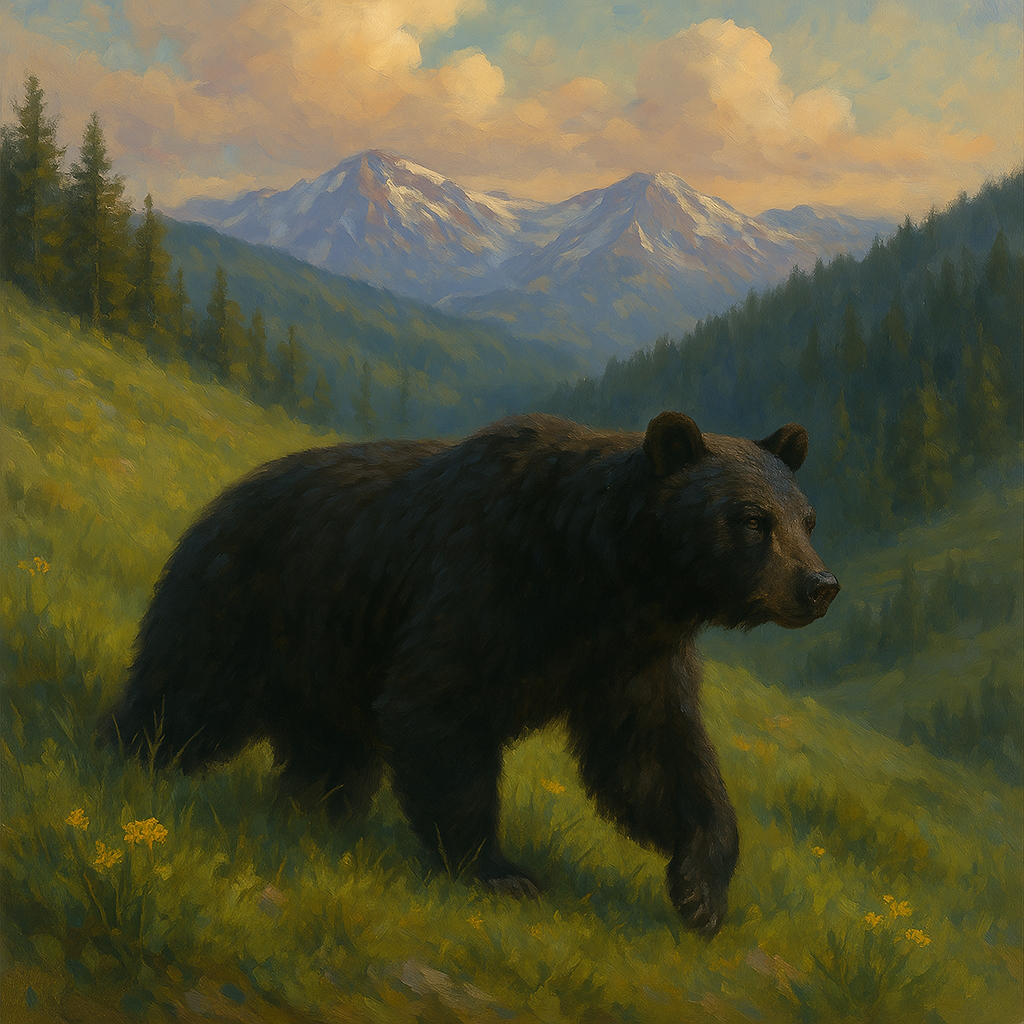
Spring Bear Hunting in Idaho: A New Hunter’s Roadmap to Success
Share
The First Roar of Spring
By Ryan Uffens, Host of The Hunt Stealth Podcast
There’s something primal about glassing a fresh green slope as the snow line creeps higher and the forests come alive again. The sun hangs longer, the air smells like thawing earth, and in the distance — maybe, just maybe — a black bear emerges from its winter den, hungry and slow but alert. For new hunters, spring bear season in Idaho is one of the most underrated and rewarding ways to cut your teeth.
If you’re looking to build skill, confidence, and grit — while chasing one of North America’s most cunning big game animals — this hunt’s for you.
Why Idaho?
Idaho is a gold mine for spring bear hunters. With generous over-the-counter tags, long seasons, and more public land than you can shake a stick at, it’s a dream scenario for the new and seasoned alike. Many units allow spot-and-stalk, baiting, and even hound hunting depending on location and preference — so you can tailor your hunt to your strengths (or what you want to learn).
Most importantly: success rates are solid. If you do your part, put boots on the ground, and learn to glass effectively — you have a real shot at tagging a bear.
Understanding Spring Bear Behavior
Coming out of hibernation, bears are laser-focused on one thing: food. You’ll find them where the green-up is happening first — usually on south-facing slopes, lower elevation ridgelines, old burns, and logging cuts. Look for:
- Fresh green grass and clover patches
- Trails near water sources
- Open hillsides that catch sunlight early in the day
They’ll feed in short bursts throughout the day, but evenings are prime time for movement. Be patient. Bears don’t always show up right away — but when they do, it can happen fast.
Essential Gear for Spring Bear Hunting
You don’t need a $5,000 kit to kill a bear. Here’s what matters most:
- Boots: Waterproof, comfortable, and broken-in
- Optics: Binoculars (10x42 is a great all-around), spotting scope if you’re glassing long distances
- Weapon: Rifle (.308, .30-06, or .300 Win Mag work great) or bow if you’re ready for the challenge
- Pack: Enough to carry meat and hide, with room for layers, water, food
- Bear Spray: Especially important in grizzly country
Nice-to-haves? A lightweight tripod, rangefinder, and a solid puffy jacket. Idaho weather can turn on a dime.
Scouting and E-Scouting: How to Find Bears
Before you head out, open up OnX or BaseMap and look for:
- South-facing terrain at mid to lower elevations
- Cut blocks or burn areas 3-8 years old
- Creeks and ridgelines with meadows nearby
Boots-on-the-ground scouting means looking for:
- Scat (big piles of dark green or black)
- Tracks (look for wide front paws, five toes)
- Claw marks on trees
- Trails with turned-over rocks or patches of grazed grass
How to Hunt: Spot-and-Stalk Basics
You’ll be glassing for hours. Set up on a high knob with a view of feeding slopes. Look for movement — slow feeding, black shadows shifting along meadows. A bear will often appear and disappear, so scan the same zone again and again.
Once spotted:
- Use the wind: Never let it blow toward the bear
- Take your time: Bears aren’t as jumpy as elk, but they’ll leave if they sense danger
- Close the distance to 200 yards or less if rifle hunting (30 yards or less for bow)
The Shot and What Comes Next
Bears are tough. Shot placement is everything. Aim just behind the shoulder — not too far back. After the shot:
- Wait. Bears often run downhill.
- Listen for a death moan — it’s not guaranteed, but can be a tell.
- Follow blood carefully — bear blood trails can be faint.
Idaho law requires proof of sex and evidence of species (black bear vs grizzly), so know your regs. Tag the bear immediately and take care of the hide quickly to avoid slippage.
Processing and Cooking
Once down, cool the meat fast. Skin the bear fully and hang quarters in the shade. Use cheesecloth or game bags to keep flies off.
Bear meat gets a bad rap — don’t believe it. Treated right, it’s rich, flavorful, and perfect for:
- Tacos
- Ground meat for burgers
- Roasts with garlic and rosemary
Important: Cook all bear meat to 160°F to avoid trichinosis. Freezing doesn’t kill it — only heat does.
What This Hunt Teaches You
Bear hunting isn’t just about the kill. It’s about:
- Patience — glassing for hours without action
- Perseverance — hiking through dense brush, post-holing snowfields
- Presence — learning to read the land, wind, and wildlife
You become a better hunter in the process. And you’ll carry those lessons into elk season, deer season, and life in general.
Final Word: You’re Ready
You don’t need to be an expert to go spring bear hunting in Idaho. You just need the drive to learn, the will to work, and the guts to go.
This spring — don’t wait for the fall. Grab a tag. Pick a unit. Study the maps. And step into the field.
The bears are out there. Go find yours.
🧭 Bonus Tips:
- Top Bear Sign: Fresh green scat = bear nearby
- Don’t do this: Don’t stalk without wind in your favor
- Tag Before You Move: Idaho requires tags to be notched before transport
Ready for more? Subscribe to The Hunt Stealth Podcast and never miss a boots-on-the-ground breakdown of what it takes to be successful in the field.

